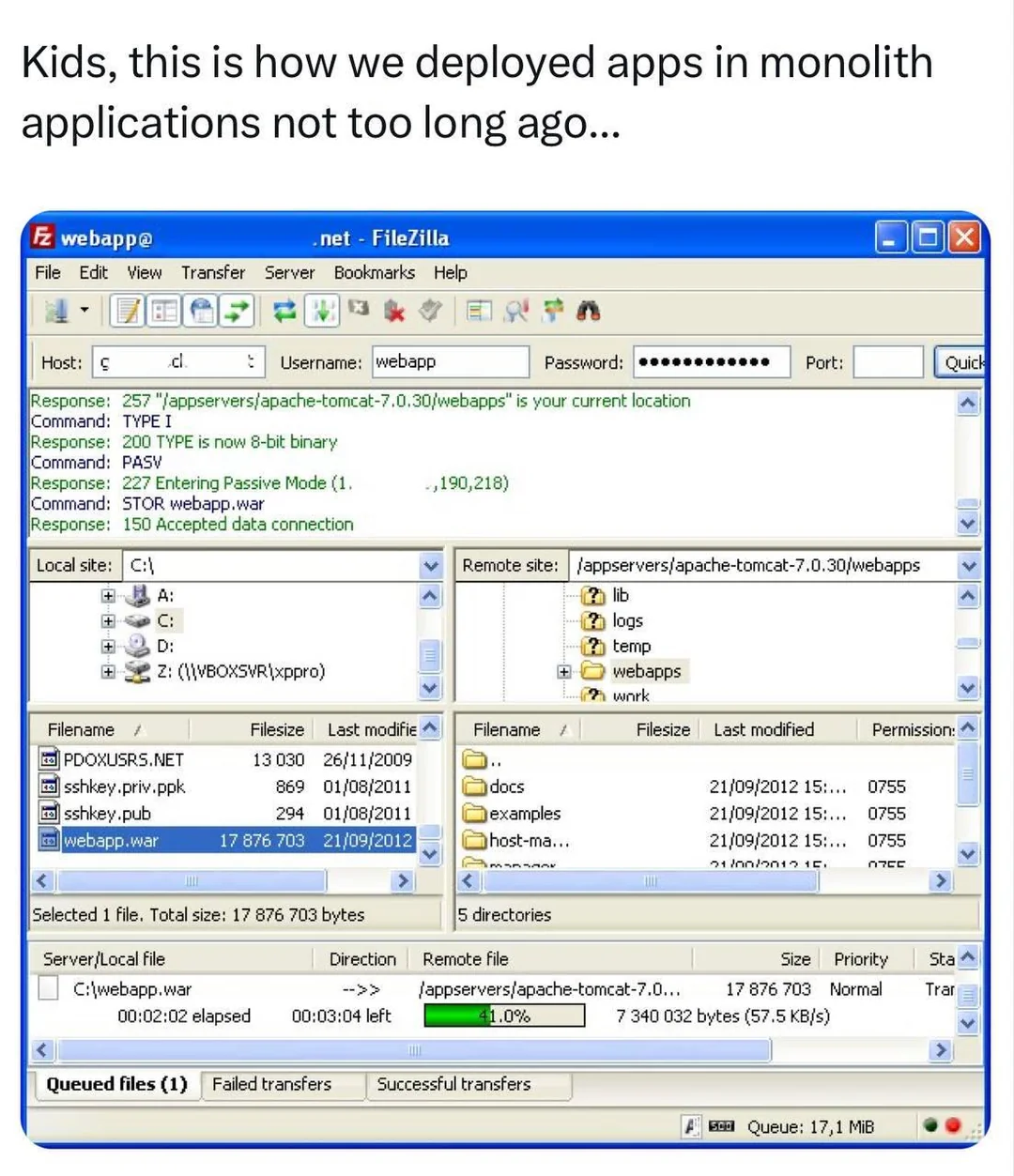this post was submitted on 22 Jun 2024
730 points (98.7% liked)
Programmer Humor
20632 readers
1278 users here now
Welcome to Programmer Humor!
This is a place where you can post jokes, memes, humor, etc. related to programming!
For sharing awful code theres also Programming Horror.
Rules
- Keep content in english
- No advertisements
- Posts must be related to programming or programmer topics
founded 2 years ago
MODERATORS
you are viewing a single comment's thread
view the rest of the comments
view the rest of the comments

People don't use FileZilla for server management anymore? I feel like I've missed that memo.
I suppose in the days of 'Cloud Hosting' a lot of people (hopefully) don't just randomly upload new files (manually) on a server anymore.
Even if you still just use normal servers that behave like this, a better practice would be to have a build server that creates builds, like whenever you check code into the Main branch, it'll create a deploy for the server, and you deploy it from there - instead of compiling locally, opening filezilla and doing an upload.
If you're using 'Cloud Hosting' - for example AWS - If you use VMs or bare metal - you'd maybe create Elastic Beanstalk images and upload a new Application or Machine Image as a new version, and deploy that in a more managed way. Or if you're using Docker, you just upload a new Docker image into a Docker registry and deploy those.
For some of my sites, I still build on my PC and rsync the build directory across. I've been meaning to set up Gitlab or something similar and configure automated deployments.
Yea, I wasn't saying it's always bad in every scenario - but we used to have this kinda deployment in a professional company. It's pretty bad if this is still how you're doing it like this in an enterprise scenarios.
But for a personal project, it's alrightish. But yea, there are easier setups. For example configuring an automated deployed from Github/Gitlab. You can check out other peoples' deployment config, since all that stuff is part of the repos, in the
.githubfolder. So probably all you have to do is find a project that's similar to yours, like "static file upload for an sftp" - and copypaste the script to your own repo.(for example: a script that publishes a website to github pages)